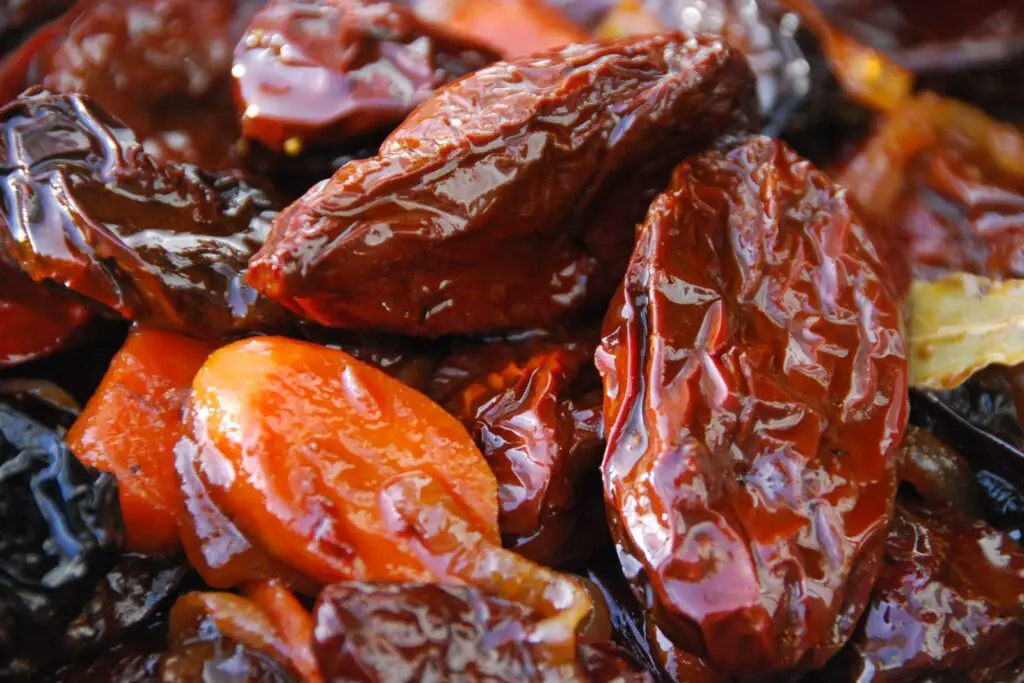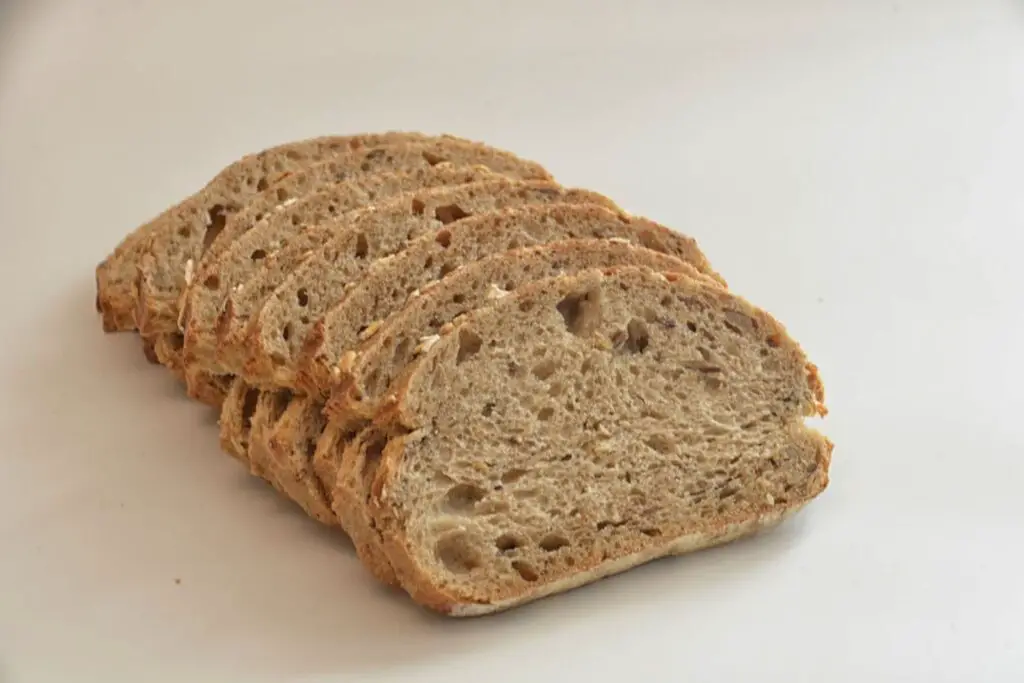
Challah, a traditional Jewish braided bread, is not only delicious fresh out of the oven but can also be frozen to enjoy later. Whether you’ve baked a large batch of challah or want to save some for future occasions, freezing is a great option to preserve its flavor and texture. By properly wrapping and storing your challah, you can ensure that it stays moist and retains its softness when thawed. Freezing challah allows you to have this beloved bread readily available whenever you desire, whether it’s for a special meal, holiday celebration, or simply enjoying a slice with your favorite spreads. With the convenience of frozen challah, you can savor its delightful taste and aroma at any time, making it a versatile staple in your kitchen.
Here is a step-by-step guide on how to freeze challah:
Step 1: Allow the challah to cool completely
Once you have baked or purchased your challah, it’s crucial to let it cool down entirely before freezing. This step is essential to preserve the quality, moisture, and texture of the bread when thawed later.
When challah comes out of the oven, it undergoes a process called “carryover cooking,” where the internal heat continues to cook the bread even after it has been removed from the oven. Allowing the challah to cool completely ensures that this process comes to a halt, preventing overcooking and maintaining the desired texture.
Additionally, cooling the challah before freezing helps prevent condensation from forming inside the packaging. If you wrap the bread while it’s still warm, the trapped heat and moisture can create excess moisture inside the package, leading to soggy or sticky bread when thawed.
Cooling the challah also allows the gluten in the bread to be set properly. Gluten is the protein responsible for giving bread its structure and elasticity. When the challah cools down, the gluten relaxes and sets, resulting in a better texture and crumb.
To cool the challah, place it on a wire rack or a clean, heat-resistant surface. This allows air to circulate around the bread, facilitating the cooling process. Avoid covering the challah immediately, as this can trap heat and moisture, compromising its quality.
Depending on the size of the challah, it may take an hour or more to cool completely. It’s important to exercise patience during this step to ensure the best results when freezing and thawing the challah later on.
Step 2: Decide on portion sizes
Consider whether you would like to freeze the entire challah or divide it into smaller portions. Dividing it can be useful if you plan to thaw and consume only a portion at a time.
Deciding on portion sizes before freezing your challah allows for greater convenience and flexibility when it comes to using the bread later on. By dividing the challah into smaller portions, you can thaw and enjoy only what you need, leaving the rest of the bread frozen for future use. This is especially helpful if you live alone, have a small household, or prefer to have individual servings readily available.
Dividing the challah into smaller portions also ensures that the bread thaws more quickly and evenly. Smaller pieces of bread will thaw faster than a whole loaf, allowing you to enjoy the bread without waiting for the entire challah to defrost. This is particularly beneficial if you’re in a hurry or have limited time to spare.
Furthermore, freezing smaller portions can help reduce potential waste. If you freeze the entire challah but only need a portion of it, you may end up defrosting more bread than necessary, which could lead to leftover slices that may go to waste. By portioning the challah before freezing, you have better control over the amount you thaw, minimizing food waste and maximizing the use of the bread.
When deciding on portion sizes, consider how you plan to use the challah in the future. If you intend to use it for sandwiches or toast, you may want to divide it into slices or smaller chunks. If you prefer to use the challah for French toast or bread pudding, you may want to freeze it as whole slices or cubes.
Regardless of the portion sizes you choose, make sure to wrap each portion individually before freezing. This will help maintain the quality and prevent freezer burn.
Step 3: Wrap the challah in plastic wrap
Start by tightly wrapping the challah in plastic wrap. This step is crucial in creating a protective barrier that prevents freezer burn and helps keep the bread fresh during its time in the freezer.
Freezer burn occurs when the moisture within the food evaporates and forms ice crystals on the surface. If left unprotected, challah exposed to the cold, dry air in the freezer can develop freezer burn, resulting in a dry and unpleasant texture. By tightly wrapping the challah in plastic wrap, you create a seal that minimizes air exposure, reducing the chances of freezer burn.
When wrapping the challah, ensure that all sides of the bread are covered securely. Start by placing the challah in the center of a large sheet of plastic wrap. Pull the sides of the plastic wrap up and over the challah, making sure it is fully enclosed. Then, gently press the plastic wrap against the bread, smoothing out any air pockets or creases. This snug wrapping helps create a moisture-resistant barrier and maintains the bread’s quality.
It’s important to note that using plastic wrap specifically designed for freezer use is recommended. Freezer-safe plastic wrap is thicker and more durable than regular plastic wrap, providing better protection against moisture loss and freezer burn.
By wrapping the challah tightly in plastic wrap, you create a shield that preserves the bread’s moisture, flavor, and texture. It helps maintain the freshness of the challah, ensuring that when you thaw and enjoy it later, it will taste as delicious as when it was first baked.
Step 4: Wrap the plastic-wrapped challah in aluminum foil
To provide an extra layer of protection against freezer burn and maintain the bread’s quality, it is recommended to wrap the plastic-wrapped challah in aluminum foil. This double-layered wrapping technique helps preserve the challah’s taste, texture, and overall freshness during its time in the freezer.
Aluminum foil acts as a barrier to protect the challah from exposure to cold air and moisture. It helps prevent the formation of ice crystals and the loss of moisture, which are the primary causes of freezer burn. By wrapping the plastic-wrapped challah in aluminum foil, you create an additional layer of insulation that helps maintain the bread’s quality.
Furthermore, aluminum foil provides a shield against odors and flavors from other foods in the freezer. This is particularly beneficial if you store the challah alongside other frozen items. The foil acts as a protective barrier, preventing the transfer of unwanted smells or tastes that could potentially affect the flavor of the bread.
When wrapping the challah with aluminum foil, make sure to cover all sides securely. Begin by placing the plastic-wrapped challah in the center of a large sheet of aluminum foil. Bring the sides of the foil up and over the bread, ensuring that it is fully enclosed. Gently press the foil against the bread to create a tight seal, minimizing any potential air pockets.
The combination of plastic wrap and aluminum foil creates a double-layered wrapping system that provides enhanced protection for the challah. This dual barrier helps preserve the bread’s moisture, flavor, and texture, ensuring that it remains fresh and delicious when you eventually thaw and enjoy it.
Step 5: Label and date the package
To easily identify the frozen challah in the future, it’s important to label the package with the current date and a description, such as “Challah.” This simple step helps prevent confusion and allows you to keep track of the freezing duration, ensuring that you consume the bread within the recommended storage time frame.
Labeling the package with the current date provides valuable information about when the challah was frozen. This is particularly useful if you have multiple items in the freezer or if you plan to freeze additional batches of challah in the future. By knowing the freezing date, you can prioritize the consumption of the oldest challah first, ensuring that none of it goes to waste.
Additionally, including a description, such as “Challah,” helps you quickly identify the package without having to open it. This is especially helpful if you store various types of bread or baked goods in the freezer. Clear labeling eliminates the need to guess or inspect each package, saving you time and effort when selecting the desired item.
Labeling also enables you to keep track of the freezing duration. While challah can be stored in the freezer for up to three months without significant loss of quality, it’s still beneficial to consume it within a reasonable timeframe. By noting the freezing date, you can easily determine when the challah should be used, ensuring that it remains at its best.
To label the package, use a marker or a label sticker and write the date and description clearly on the aluminum foil. If you prefer using label stickers, make sure they adhere securely to the foil, preventing them from falling off or becoming illegible over time.
By taking a few moments to label and date the package, you establish a system that helps you manage your frozen challah inventory efficiently. It prevents confusion, allows for proper rotation, and ensures that you consume the bread while it’s still at its peak quality.
Step 6: Store the wrapped challah in the freezer
Once you have tightly wrapped the challah in plastic wrap and aluminum foil, it’s time to store it in the freezer. Proper storage ensures the bread remains in optimal condition until you’re ready to thaw and enjoy it. Here’s how to store the wrapped challah in the freezer:
- Freezer-safe bag or container: To provide an extra layer of protection against freezer burn and potential odor absorption, place the wrapped challah in a freezer-safe bag or container. This helps maintain the bread’s quality and prevents it from being exposed to the cold air in the freezer. Choose a bag or container that is durable, airtight, and appropriate for freezing to keep the challah well-preserved.
- Selecting a suitable spot: When placing the wrapped challah in the freezer, choose a spot where it won’t get crushed or damaged by other items. Avoid placing it near the freezer door, as this area is more prone to temperature fluctuations. Instead, opt for a stable and level shelf or drawer in the freezer. By selecting an appropriate spot, you ensure that the challah remains intact and maintains its shape during freezing.
- Ideal storage temperature: The ideal storage temperature for frozen challah is below 0°F (-18°C). This temperature range helps maintain the bread’s freshness and quality over an extended period. Most household freezers are set to this temperature by default, but it’s a good idea to check and adjust if necessary. Consistently low temperatures prevent the growth of bacteria and maintain the challah’s texture and flavor.
Proper storage in the freezer, including using a freezer-safe bag or container and maintaining the ideal temperature, helps preserve the challah’s taste and texture for an extended period. It ensures that when you eventually thaw the bread, it will still be delicious and enjoyable.
Remember to arrange the wrapped challah in a way that makes it easily accessible and identifiable. If you have multiple frozen items, consider organizing them by date or type to make it more convenient to find the specific package you desire.
Other related questions
How do I properly thaw challah?
To properly thaw challah, remove it from the freezer and leave it at room temperature. It’s important not to rush the process by using direct heat or the microwave, as it can result in uneven thawing or a soggy texture. Allow the challah to thaw naturally for several hours or overnight until it reaches room temperature. Once thawed, you can warm it in a preheated oven for a few minutes to restore its freshness and serve it warm.
How long can I freeze challah?
Frozen challah can be stored for up to three months without significant loss of quality. It is important to adhere to this recommended storage time frame to ensure the bread retains its taste and texture. Beyond three months, the challah may start to develop freezer burn or lose its freshness. Proper packaging and labeling, as well as storing the bread in a freezer set at the ideal temperature, will help maintain its quality throughout the storage period.
Can I refreeze challah that has been previously thawed?
It is generally not recommended to refreeze challah that has been previously thawed. When you thaw challah, moisture is released, and refreezing can compromise its texture and quality. Additionally, repeated thawing and refreezing can increase the risk of bacterial growth and food safety concerns. It is best to plan your portions accordingly and only thaw the amount of challah you intend to consume to avoid the need for refreezing. If you have leftover thawed challah, it is advisable to use it promptly or find alternative ways to repurpose it.
How do I know if my frozen challah has gone bad?
To determine if frozen challah has gone bad, there are a few key indicators to look for. Firstly, check for any signs of freezer burn, such as discoloration or dry, shriveled areas on the bread’s surface. If the challah appears excessively dry or has a significantly altered texture, it may indicate freezer burn or loss of moisture. Additionally, a stale or off smell can be an indication that the challah has deteriorated. Finally, if there are any visible signs of mold or unusual growth, it is a clear indication that the bread has spoiled and should not be consumed.
Can I use frozen challah with fresh ones?
Yes, you can use frozen challah alongside fresh ones, but there are a few considerations to keep in mind. Frozen challah may have a slightly different texture and taste compared to freshly baked challah. It is best to thaw and warm the frozen challah before serving to bring it as close to the texture and flavor of the fresh ones as possible. Mixing fresh and frozen challah can be a convenient way to extend your bread supply and enjoy the convenience of having bread readily available.
Can I freeze challah dough instead of baked bread?
Yes, you can freeze challah dough instead of baking it immediately. Freezing challah dough allows for convenient preparation ahead of time. After preparing the dough, shape it into the desired form, such as braids or rolls, and then wrap it tightly in plastic wrap and aluminum foil before placing it in the freezer. When you’re ready to bake, simply thaw the dough in the refrigerator overnight, allow it to come to room temperature, and then proceed with the baking instructions as usual.
Can I freeze leftover challah from a Shabbat meal?
Absolutely! Leftover challah from a Shabbat meal can be frozen for later use. To freeze the leftover challah, ensure it has cooled completely, then tightly wrap it in plastic wrap and aluminum foil to prevent freezer burn. Properly stored, the frozen challah will retain its flavor and texture, allowing you to enjoy it at a later time.
Can I freeze challah that has been braided or shaped into different forms?
Yes, you can freeze challah that has been braided or shaped into different forms. Prior to freezing, ensure the braided or shaped challah has cooled completely. Then, tightly wrap it in plastic wrap and aluminum foil to protect its shape and prevent freezer burn. Freezing challah in its desired form allows for easy thawing and baking, maintaining its beautiful appearance when it is served.
Can I freeze gluten-free challah?
Yes, you can freeze gluten-free challah. Gluten-free challah can be frozen using the same steps as regular challah. After cooling, tightly wrap the gluten-free challah in plastic wrap and aluminum foil to maintain its freshness and prevent freezer burn. Freezing gluten-free challah can be a convenient option to have it on hand whenever you desire, ensuring that you can enjoy it even if you don’t consume it all immediately.
Can I freeze challah with egg wash on top?
Yes, you can freeze challah with an egg wash on top. The egg wash may slightly change in appearance and texture after freezing, but it will not significantly affect the overall quality of the bread. When freezing challah with an egg wash, ensure it has cooled completely, wrap it tightly in plastic wrap and aluminum foil, and follow the usual freezing process.








